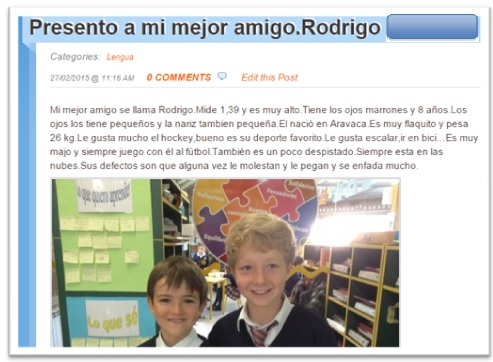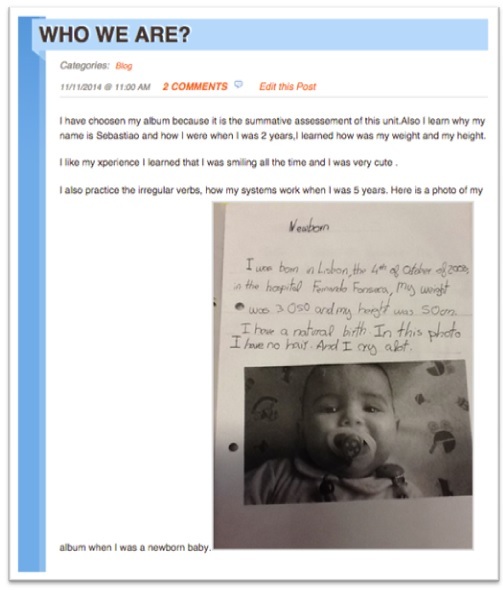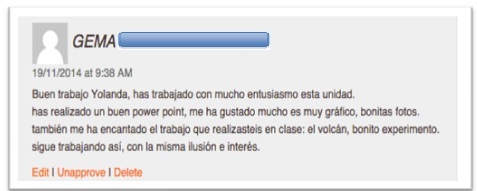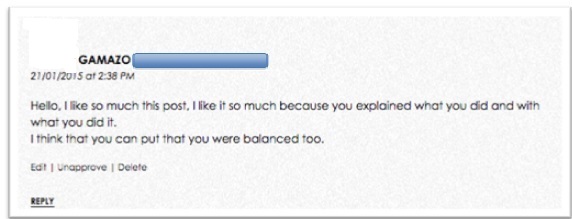
Daniela Kemeny is a year 6 teacher and PYP Coordinator at SEK International School – El Castillo, Spain
A PYP teacher and coordinator illustrates how digital learning portfolios are used in their school: by collecting evidence of how each learner is developing conceptual understandings, skills, attitudes and a desire to act, along with the acquisition of knowledge.
Assessment and documentation of learning evidence is a big idea in the PYP. The philosophy of the programme invites us to have a much broader and modern view on assessment—a view that is beyond traditional tests and exams. We want to ensure that through our assessments, we can gather information on the development of the five essential elements, and document learner’s progress through time within and across the curriculum.
Learning is much more than a score on written tests. We, PYP teachers, have the urgent need to collect evidence of how each learner is developing conceptual understandings, skills, attitudes and a desire to act, along with the acquisition of knowledge. Demonstrating this can be challenging, and communicating it effectively to the school community is even more challenging.
One common practice among PYP schools and definitely a good practice that many non-PYP schools are implementing is the use of “Learning Portfolios”. A practice burrowed from art, design and architecture schools, and adapted into education by the early childhood centers of Reggio Emilia. Learning Portfolios are now a common strategy used to document learning, and have proven to be an effective way to objectively identify student’s learning process, as well as to communicate this clearly to both the learners and their families.
Our experience at SEK International School – El Castillo has opened our eyes to this. We took it one step further and used technology to enhance the whole process of creating Learning Portfolios. We wanted this process to also develop the students’ literacy and digital literacy skills.
The Digital Learning Portfolios are currently done by students from year 3 to 6. Students in these year groups use a safe and student-friendly application called kidblog.org. Throughout a unit of inquiry, students, either lead by their teachers or independently as dictated by their own needs, log onto their accounts and use the easy interface to reflect on their learning and development. In their reflections, they are asked to include photos of their work to evidence the learning they have achieved or challenges they have faced, and to thoughtfully comment on the way they have been developing the five essential elements.
Students collaborate with each other through self-assessment. This means that each student can access their classmate’s portfolio and write constructive feedback to each other. Parents have their own log-in information allowing them to access their child’s portfolio, read their reflections, and write their own comments. Teachers, of course, use the same platform to give feedback on student learning and progress.
Using Digital Learning Portfolios has given us the platform to keep an accurate record of students’ learning and has enabled us to share this within the school community in a seamless, easy manner. It has also broadened teachers’ perspectives on the purpose of assessment and helped them value other assessment practices beyond testing. This has been true for parents, who, in seeing their children’s work alongside their reflective comment, and the feedback from the teacher, have begun to value more open-ended tasks and projects as valid evidence of learning.
Parents have begun to better understand that tests and exams are not the only option to identify student learning. Parents have also reported that being able to access their children’s information whenever they like has made them more at ease about how their children are developing; having the opportunity to participate and comment has made them more confident on the way their children are learning.
As for the students, it has been very rewarding to see how student’s reflections are more thoughtful, genuine and truly connected to their personal learning journeys.
This is definitely only the starting point for our journey. We will continually evolve in the way that we are implementing our Digital Learning Portfolios. We are eager to connect with other schools and teachers to find out more about their experiences in using a Digital Learning Portfolio.
—
Daniela Kemeny has taught in IB World schools both in America and Europe, where she has also been a workshop leader, site visitor and consultant. Considering herself an inquirer and risk taker, she enjoys taking on challenges and conducting her own research to explore and broaden her teaching and learning philosophy.






